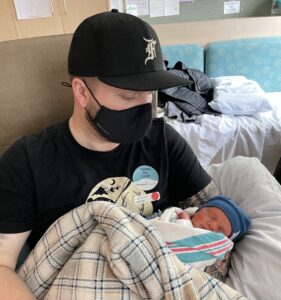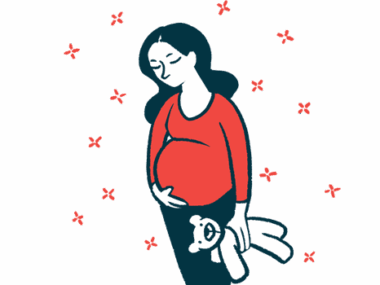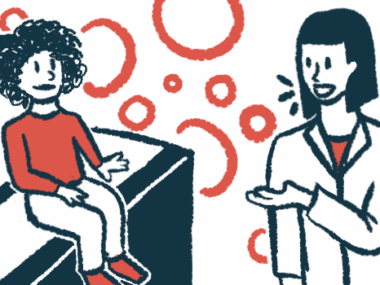Finding our way to advocacy, and through it, therapy
How writing and Instagram posts have helped us process our son's disease
Written by |

As someone who tends to be introverted, I saw advocacy as daunting. I had a narrow understanding of how it could look. But after my son Finley was diagnosed with Alagille syndrome, I began to see multiple avenues I could follow to be an advocate.
I was prompted toward it in several ways. My wife and I, for instance, quickly realized that we couldn’t find the Alagille syndrome content we wanted. It was easy to find the medical information — but it came from scholarly sources with language that we had to work to understand, given that we didn’t have a medical or science background.
We wanted a glimpse into our future. What does an average day look like for a child with Alagille syndrome? What do other kids with this disease look like as they get older? We began to wonder how we could share our journey so others could use our experience as a resource.
Initially, my wife, Dani, took off with this task. Of the two of us, she’s exceedingly better at navigating the social media landscape. She started the Instagram account @rare_with_finn to share our life raising Finley, with the ups, the downs, the test results and doctor visits, but also the snapshots of daily life. She posted about moments such as Finley taking his first trip to the movies this year, his eating a Popsicle in the sun, and his chasing a speck of light on the sidewalk, like a cat. The posts demonstrated that while Alagille is an omnipresent part of our lives, we have everyday moments, too.
Dani is great at crafting an idea for a post, whereas I tend to be a better writer. We balance each other and make for a pretty decent team. She’s been doing amazing work running that Instagram page, connecting with families all over the world who are looking for exactly what we were: a light in the dark after diagnosis, a person to field questions who’s not a doctor, and someone who speaks the same, newly acquired language of rare disease.
My own approach
I’d never considered this route of sharing our story as advocacy. But of course it is. And when the opportunity presented itself to write for this website, Liver Disease News, I jumped at the opportunity.
I’ve found over time that I do much better when I put my thoughts down in writing. I can navigate my feelings and emotions better. And I’ve found, after a few months of writing this column, that it’s my therapy. It’s my chance to navigate complex, emotional situations we’ve faced so I can work through my feelings and experiences.
My hope is that people will read my column and find a common understanding so they’ll feel they’re not alone. A rare disease journey can be isolating — not because you don’t have a support system, but because it’s hard for others to understand unless they live it. I want this column to be that resource, and that more of us out there will be ready to support one another.
If you’re also raising a child with a rare disease, know that advocacy can take many forms. Find which is right for you. This column has been incredibly positive for me, and I hope it is for readers, too.
Note: Liver Disease News is strictly a news and information website about the disease. It does not provide medical advice, diagnosis, or treatment. This content is not intended to be a substitute for professional medical advice, diagnosis, or treatment. Always seek the advice of your physician or other qualified health provider with any questions you may have regarding a medical condition. Never disregard professional medical advice or delay in seeking it because of something you have read on this website. The opinions expressed in this column are not those of Liver Disease News or its parent company, Bionews, and are intended to spark discussion about issues pertaining to liver disease.










Leave a comment
Fill in the required fields to post. Your email address will not be published.